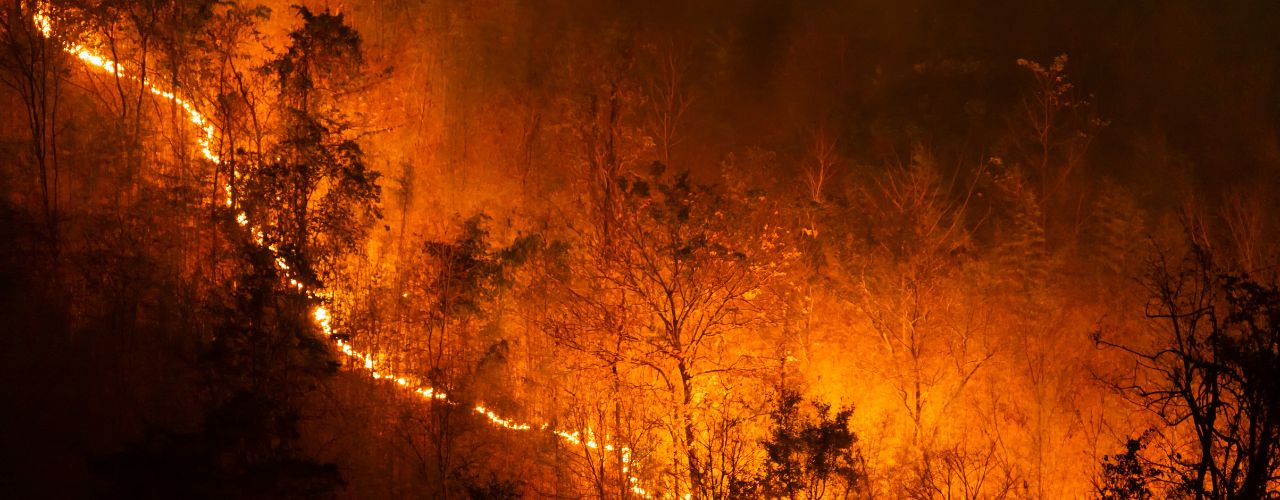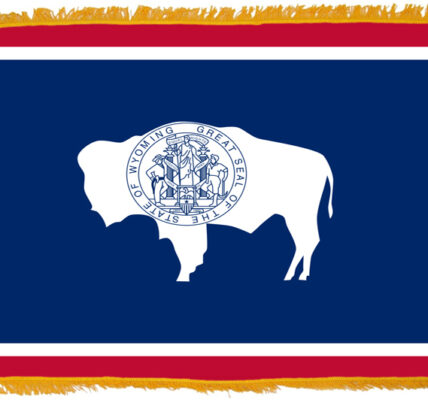
By Alyssa Crutcher
Wyoming Tribune Eagle
Via- Wyoming News Exchange
CHEYENNE — Forestry and public land officials said Friday that they expect Wyoming to experience an “average-to-normal” wildland fire season, with the north-central part of the state experiencing the driest conditions.
In what has become an annual tradition, Wyoming State Forestry Division and Bureau of Land Management officials joined Gov. Mark Gordon in a media briefing that covered wildfire safety, prevalence and steps officials are taking to lower the risk of wildfires in Wyoming this year.
State Forester Kelly Norris said when it comes to wildland fire in Wyoming, the interagency group has strong partnerships backed up by agreements.
“Wyoming takes an ‘all hands, all lands’ approach to wildland fire suppression,” Norris said. “Interagency coordination is important for Wyoming as we continue to work together to protect our communities, our infrastructure, watersheds and critical resources.”
The National Significant Wildland Fire Potential Outlook has indicated that Wyoming is expected to have an “average- to-normal” fire season, Norris said. Northern Wyoming is currently the
driest area in the state, and north-central Wyoming is expected to have drought conditions throughout the summer.
As summer weather causes fuels in the mountains and grasslands to dry out, Norris said the interagency group expects an increase in fire activity, especially in the later summer and earlier fall months. This spring alone, more Wyoming acres have been burned than all the acres burned in 2023.
With the support of the Wyoming Legislature, Wyoming State Forestry is providing a Type 3 helicopter and crew for initial attack and two single-engine air tankers, Norris said. The helicopter crew will begin Monday, and the single-engine air tankers will come under contract June 12.
Recently, the state of Wyoming received $1.75 million in grant funding from the U.S. Forest Service for large-scale field projects and mitigation planning.
Over the past three years, Wyoming has received $5 million from competitive grants for 19 field mitigation projects across 13 counties. This recent grant funding will complete critical field treatments on over 2,500 acres of private and state lands, Norris said.
This week, the Forestry Division completed the planting and reforestation of an area in the Oil Creek fire burn with its inmate program by planting more than 5,000 trees, Norris said.
Shad Cooper, the Sublette County fire warden and chief and president of the Wyoming Fire Advisory Board for the Wyoming Rural Firefighters Association, said preventing wildfires is a community effort because the issue affects everyone.
“If you look at the Happy Jack Fire just recently in March,” Cooper said, “that’s unprecedented to see that kind of fire behavior, and now it’s becoming the new norm. It’s something that requires tremendous effort and preparation all year-round. We can’t wait until smoke is in the air to clean up the hazardous, flammable material in our yards.”
Last year, state fire officials noticed that there was a trend in Wyoming and the nation of a reduction in volunteer firefighters, Cooper said. As a result, they went to the Legislature to ask for help, and several bills were passed, some of which included the following:
- Senate File 3 — Allows state employees who are emergency responders up to 24 hours per week to respond to emergency incidents.
- Senate File 8 — Allows volunteer emergency responders access to the state’s group health care plan, which they have to pay for themselves.
- House Bill 66 — Helps firefighters to identify and screen for cancers early, before they become life-threatening situations.
- House Bill 43 — Allows the Wyoming State Forestry Division to hire Good Neighbor Authority foresters to come into the communities and work with local, state and federal partners to identify hazardous fuels to improve forest health.
Andrew Archuleta, the Wyoming state director of the Bureau of Land Management, said his team manages around 17 million acres, and they depend on their partnership with Wyoming State Forestry to have an effective firefighting group.
The BLM has 17 fire engines, a 20-person veterans hand crew, a Type 3 helicopter and crew, and many firefighters across the state.
The BLM also manages seed bases throughout Wyoming, which “collect wildland native seed for research, development, germplasm conservation and ecosystem restoration,” according to a BLM website. The long-term goal of the program “is to support the native plant materials development process, by which the BLM increases the quality and quantity of native plant materials available for restoring and supporting resilient ecosystems.”
Archuleta said this year will mark the fourth year of the BLM’s seed base in Rock Springs, which has become a model for building seed bases nationally. In June, the BLM is going to have a ribbon-cutting ceremony for the seed base that is being reconstructed in Casper.
Through a variety of methods last year, the BLM has treated over 150,000 acres in Wyoming for hazardous fuels, Archuleta said. It is looking to treat about 85,000 acres this year.
Archuleta said 85% of wildfires are human-caused and usually happen near roads, communities and recreational areas. He said the No. 1 thing the community needs to keep in mind is to be careful when using public spaces and practice measures such as putting out campfires and refraining from tossing cigarettes on the ground.
“Our No. 1 goal, and I think I share it with the other agencies here, is the protection of life and property,” Archuleta said. “That includes the public and firefighters.”
Chris Campbell, deputy regional forester for the Intermountain Region of the U.S. Forest Service, said the agency has more than 1,500 permanent and seasonal firefighters in place for the fire season this year, as well as 83 wildland engines, six 20-person interagency hotshot crews and a number of helitack and other air assets.
Over the past year, Campbell said his team has been working to reduce wildfire risk on more than 134,000 acres of national forest land across the region through mechanical thinning of overgrown forest and prescribed burning of excess wood fuels. This year, the team is on track to treat more than 18,000 acres in Wyoming alone.
“Wyoming and much of the West is facing a daunting wildfire season this year, with drought conditions already present across much of the state,” Campbell said. “No one agency or landowner can successfully address the wildfire threat alone. It’s going to take all of us.”




